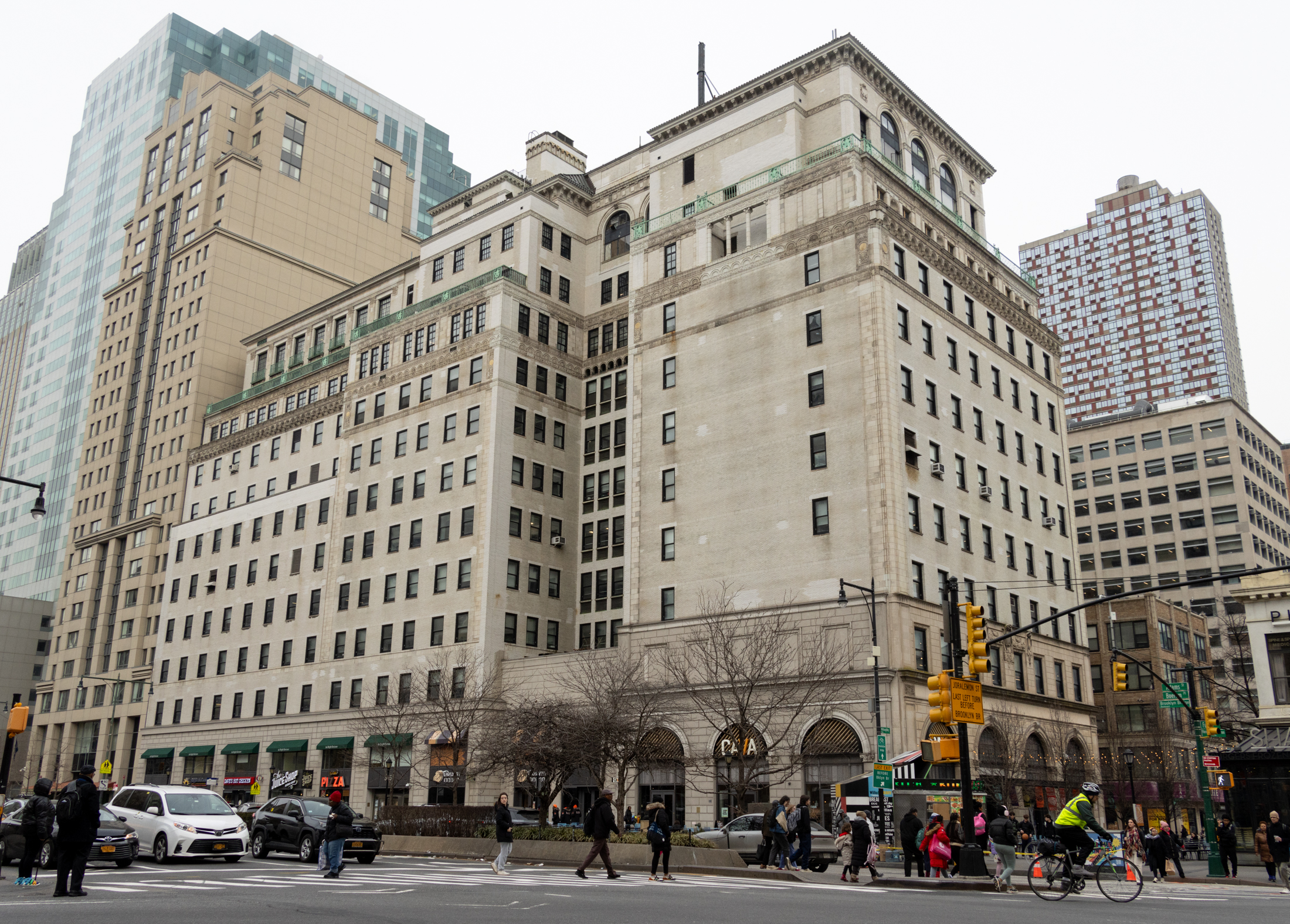Building of the Day: 64 and 80 Poplar Street
(64 Poplar Street) Brooklyn, one building at a time. Name: Private houses Address: 64 and 80 Poplar Street Cross Streets: Henry and Hicks Street Neighborhood: Brooklyn Heights Year Built: Unknown, educated guess: 1830’s-1840’s Architectural Style: Greek Revival Architect: Unknown Landmarked: Yes, part of Brooklyn Heights HD (1965) The story: So here’s a mystery, a conundrum,…

Brooklyn, one building at a time.
Name: Private houses
Address: 64 and 80 Poplar Street
Cross Streets: Henry and Hicks Street
Neighborhood: Brooklyn Heights
Year Built: Unknown, educated guess: 1830’s-1840’s
Architectural Style: Greek Revival
Architect: Unknown
Landmarked: Yes, part of Brooklyn Heights HD (1965)
The story: So here’s a mystery, a conundrum, houses without provenance, or story. No one famous lived here, and nothing newsworthy happened here. The houses lies on the end of Brooklyn Heights, in one of the oldest parts of this old neighborhood, near the hustle and bustle of the northern industrial side of the Heights, at one time, near factories, businesses, and tenements. They are interesting houses; clapboard clad with brick foundations and ground floors; classic Greek Revivals, as evidenced by the pediments surrounding the doorways, the general construction and cornices. Brooklyn Heights is full of these, yet much more is known about some of these other homes, and not much about these. Let’s explore the mystery further.
When researching buildings for this column, I go to several quick and reliable sources. If the building is in a landmarked district, my first move is to check the designation report. That doesn’t help me here, as Brooklyn Heights was the first HD in NYC, in 1965, and they wrote a general, one size fits all for the entire district, a whole two pages. It wasn’t until a couple of years later that the detailed reports began to be written. So no info there.
If the building is interesting, either architecturally, or historically, it often appears in one of the two books always at my desk, the AIA Guide to NYC, and Francis Morrone’s Architectural Guidebook to Brooklyn. These houses did not make the cut in either book. Next. Architectural historian Clay Lancaster wrote Old Brooklyn Heights, New York’s First Suburb, a pioneering guide to the buildings of Brooklyn Heights, first published in 1961. It was one of the reasons the Heights became the first landmarked district, and it’s an invaluable book. But Lancaster only covered buildings built before the Civil War. And for some reason he also did not write about Poplar Street, the northernmost Heights Street, at all. That may be because none of the houses on this block date before the Civil War, which I don’t think is true, because I think these houses date from between 1830 and the 1840’s, like the houses on Middagh and elsewhere. Maybe he didn’t think there was anything worth talking about on the block. I have no idea, but nada from Mr. Lancaster.
My good friend Google, the Builder’s Guide, and Property Shark are no help. Property Shark, with its information gathered from the city’s public records has the buildings as being built in 1930. NOT. The New York Times and the Brooklyn Eagle also had no entries. Sorry, but nothing notable happened here. If I were being paid to really do an in-depth study, I’d go to the census records, as well as to the Historical Society, and the Eagle morgue, but that is very time consuming, and not for BOTD’s, I’m afraid. So my last step is to look at the maps.
The many Brooklyn atlases and insurance maps are available on-line through the NYC public Library. There are also a couple of other sites, but they are not as complete. I looked at the map for 1874, but it is impossible to see if anything is built on the lot. The map for 1880 is more helpful, and shows a line of wood framed houses all along the block between Henry and Hicks. The yellow color means the buildings are wood; the red entries are brick and masonry buildings.
By the 1898-99 map, we can see that things have not radically changed on this side of the block. Across the street, the Children’s Aid Society building has been built, and there are many more masonry buildings, and far less wooden ones. Brooklyn Heights is changing. The last map, drawn up in 1916, shows great changes. The police precinct has replaced most of the wooden houses, and the school has grown up behind the rest of that block, leaving 64 and 80 flanking the precinct, with three other houses next door to # 80.
Today, only these two on either side of the station house remain. The others have all been torn down. I would hazard a guess that originally, #64’s front windows were ordered like #80’s are, and that the side windows were a later addition, after the other buildings were torn down. Before Cadman Plaza was built, this block was part of working class Brooklyn Heights, so it is no wonder #80 still is home to eight families, # 64 is now home to two. We still don’t know much about these buildings, peer se, but the journey has been an intriguing one. GMAP
















What's Your Take? Leave a Comment